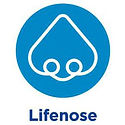

SUPPORT THE RESEARCH
How to help
See some of the ways your support helps. We receive no funding for our research, so our life-saving work is only possible thanks to people like you. We need your support. Donate today.

The project LIFENOSE
The research project aims at exploring the applications of neural networks to electronic nose in order to develop an innovative, inexpensive and portable biomedical instrument, able to diagnose diseases in humans, in a noninvasive manner. Currently the commercial electronic nose instruments have limited applications in the breath analysis, and a portable and inexpensive instrument, capable to discriminate the presence of biomarkers in low concentrations, is not yet available. Such an instrument could provide an early diagnosis of illness and save many lives, especially in poor areas. The configuration of sensors will be hybrid (nonspecific and specific sensors), which increases the sensitivity and discrimination ability of analytes. Nonspecific chemical sensors will be made of nanostructured films of conducting polymers, phthalocyanines, carbon nanotubes and inorganic nanoparticles. Specific sensors will be made by molecular imprinting technique in polymer films and metal oxides. The analysis will focus mainly on identifying low levels of acetone, alkanes (butane, hexane and 2-methylhexane) and 1-methylnaphthalene, substances known to be biomarkers of diabetes, lung cancer and pulmonary tuberculosis, respectively. We want to extend our work to three parallel directions. The first one will enhance sensors technology with the development of longer-life and stable sensors. The second one will improve classification techniques in which we highlight the importance of Artificial Neural Network. The third direction intends to develop a cheap (by in-house developed, low cost sensors) and portable (using microcontroller or DSP rather than expensive and bulky external processing systems) instrument.
The impact of the research findings (rapid detection of illness such as diabetes, lung cancer and pulmonary tuberculosis), would be of enormous importance in clinical, both for the non-invasiveness, and for the drastic reduction of costs related to instrumental analysis. In this perspective, the realization of a low cost and commercial tool has a considerable potential.